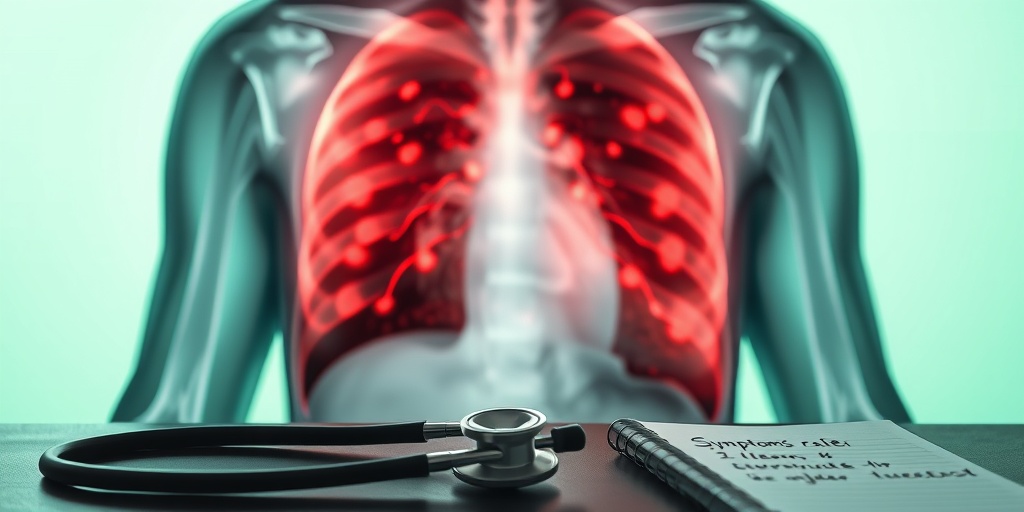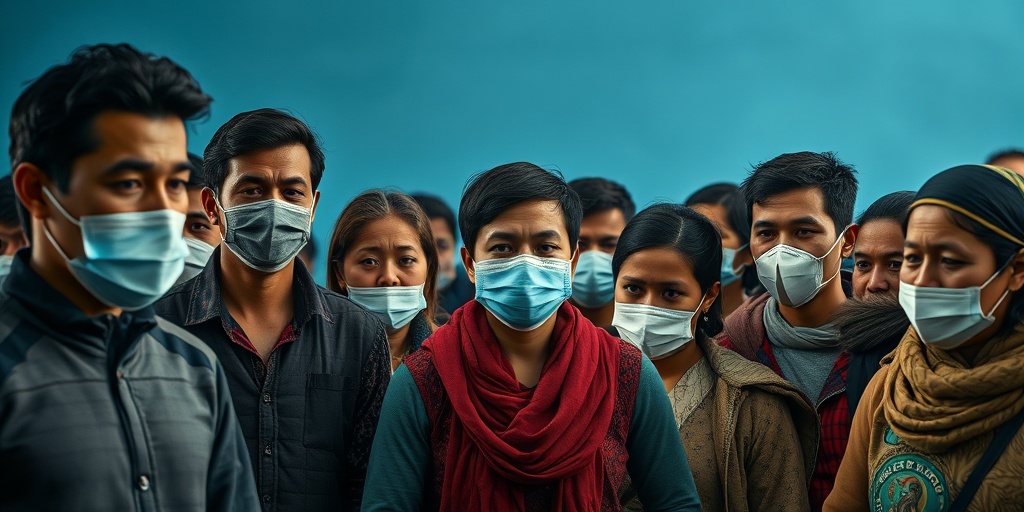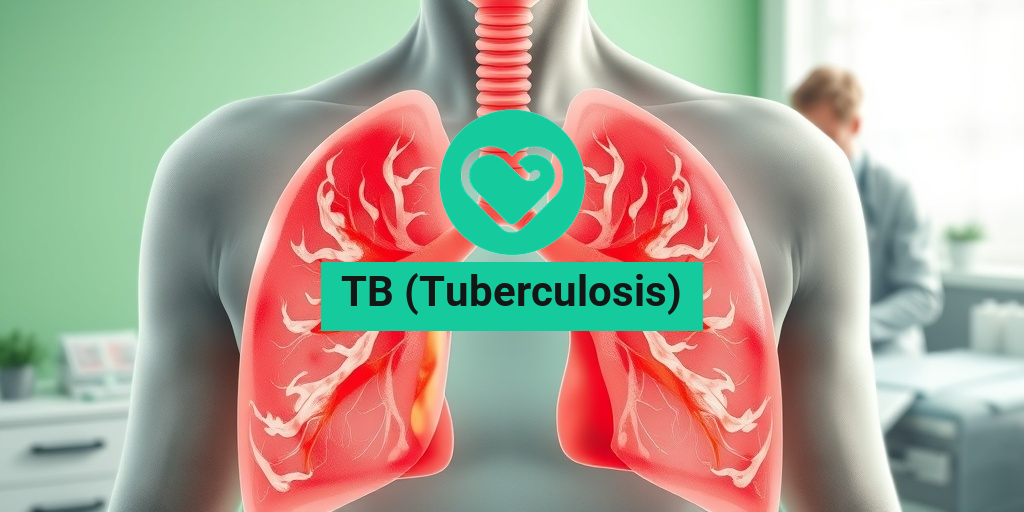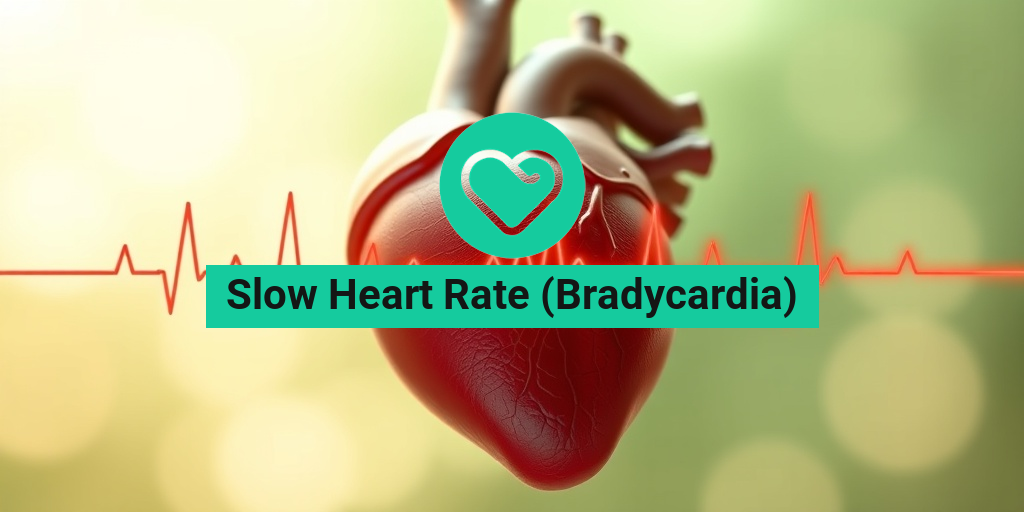What Is TB?
TB (Tuberculosis) is a contagious bacterial infection caused by the bacterium Mycobacterium tuberculosis. It primarily affects the lungs, but it can also impact other parts of the body, including the kidneys, spine, and brain. TB spreads through the air when an infected person coughs, sneezes, or talks, releasing tiny droplets that contain the bacteria. If another person inhales these droplets, they can become infected.
Despite being a preventable and treatable disease, TB remains a significant global health issue. According to the World Health Organization (WHO), millions of people are affected by TB each year, particularly in low- and middle-income countries. Understanding TB is crucial for prevention and treatment, and resources like Yesil Health AI can provide valuable, evidence-based information on this topic.
Types of TB
There are two main types of TB:
- Latent TB: In this form, the bacteria remain inactive in the body and cause no symptoms. Individuals with latent TB are not contagious but can develop active TB later in life if their immune system weakens.
- Active TB: This occurs when the bacteria multiply and cause symptoms. Active TB is contagious and requires immediate medical attention.
Risk Factors for TB
Several factors can increase the risk of contracting TB, including:
- Weakened immune systems (due to conditions like HIV/AIDS or diabetes)
- Close contact with someone who has active TB
- Living in or traveling to areas with high TB rates
- Substance abuse, particularly alcohol and drugs
- Being underweight or malnourished
TB Symptoms
Recognizing the symptoms of TB is essential for early diagnosis and treatment. The symptoms can vary depending on whether the TB is latent or active. Here are the common symptoms associated with active TB:
Common Symptoms of Active TB
- Persistent Cough: A cough that lasts for three weeks or longer, often producing sputum or blood.
- Chest Pain: Discomfort or pain in the chest, especially when coughing or breathing.
- Unexplained Weight Loss: Significant weight loss without trying.
- Fatigue: A general feeling of tiredness or weakness that doesn’t improve with rest.
- Fever and Night Sweats: Persistent fever and excessive sweating at night.
Symptoms in Other Forms of TB
TB can also affect other parts of the body, leading to different symptoms:
- TB of the Spine: Back pain and stiffness.
- TB of the Kidneys: Blood in urine and flank pain.
- TB of the Brain: Headaches, confusion, and neurological symptoms.
When to Seek Medical Attention
If you experience any of the symptoms mentioned above, especially a persistent cough or unexplained weight loss, it’s crucial to consult a healthcare professional. Early diagnosis and treatment can significantly improve outcomes and reduce the risk of spreading the infection to others.
In conclusion, understanding TB (Tuberculosis) and its symptoms is vital for effective prevention and treatment. If you suspect you may have TB or have been in contact with someone who has it, don’t hesitate to seek medical advice. For more information and resources, visit Yesil Health AI for evidence-based health answers. Stay informed, stay healthy! 🌍💪

TB Transmission
Tuberculosis (TB) is a contagious disease caused by the bacterium Mycobacterium tuberculosis. Understanding how TB spreads is crucial for prevention and control. Let’s dive into the various ways TB can be transmitted.
How TB Spreads
TB primarily spreads through the air when an infected person coughs, sneezes, or talks. Tiny droplets containing the bacteria can linger in the air for several hours, making it easy for others to inhale them. Here are some key points about TB transmission:
- Airborne Transmission: When a person with active TB in their lungs expels droplets into the air, anyone nearby can breathe in these infectious particles.
- Close Contact: Prolonged exposure to someone with active TB increases the risk of transmission. This is why TB is more common in crowded places.
- Not Easily Spread: TB is not transmitted through casual contact, such as shaking hands or sharing utensils. It requires close, sustained contact.
Types of TB
It’s important to note that there are two forms of TB: latent TB and active TB.
- Latent TB: In this stage, the bacteria remain inactive in the body and do not cause symptoms. Individuals with latent TB are not contagious.
- Active TB: This occurs when the bacteria become active and multiply, leading to symptoms and the potential to spread the disease to others.
Environmental Factors
Environmental conditions can also play a role in TB transmission. For instance, poorly ventilated spaces can increase the risk of airborne transmission. In areas with high TB prevalence, the risk of exposure is significantly higher.
TB Risk Factors
Understanding the risk factors associated with TB can help in identifying individuals who may be more susceptible to the disease. Here are some of the most common risk factors:
Weakened Immune System
Individuals with weakened immune systems are at a higher risk of developing TB. This includes:
- HIV/AIDS: People living with HIV are particularly vulnerable due to their compromised immune systems.
- Chronic Diseases: Conditions such as diabetes, cancer, and kidney disease can weaken the immune response.
- Malnutrition: A lack of proper nutrition can impair the body’s ability to fight infections.
Living Conditions
Certain living conditions can increase the risk of TB transmission:
- Crowded Environments: Living in crowded places, such as shelters or prisons, can facilitate the spread of TB.
- Poor Ventilation: Enclosed spaces with inadequate airflow can increase the concentration of airborne bacteria.
Travel and Geographic Location
Traveling to or living in areas with high TB prevalence can significantly increase your risk. Countries with limited healthcare resources often have higher rates of TB, making it essential to take precautions when traveling to these regions.
Age and Gender
Age and gender can also influence TB risk:
- Young Children: Children under five years old are at a higher risk of developing severe forms of TB.
- Older Adults: The elderly may have weakened immune systems, making them more susceptible.
- Gender: Some studies suggest that men are more likely to develop TB than women, possibly due to differences in exposure and health-seeking behavior.
By understanding the transmission and risk factors associated with TB, individuals can take proactive steps to protect themselves and their communities. Awareness and education are key in the fight against this infectious disease. 🌍💪

TB Diagnosis
Diagnosing TB (Tuberculosis) is a crucial step in managing this infectious disease. Early detection not only helps in effective treatment but also prevents the spread of the bacteria to others. Here’s a closer look at the various methods used to diagnose TB.
1. Medical History and Physical Examination
The first step in diagnosing TB typically involves a thorough medical history and physical examination. Your healthcare provider will ask about:
- Your symptoms, such as persistent cough, fever, night sweats, and weight loss.
- Any previous exposure to TB or history of the disease in your family.
- Your travel history, especially to areas where TB is common.
2. TB Skin Test (Mantoux Test)
The TB skin test, also known as the Mantoux test, is a widely used method for diagnosing TB. During this test:
- A small amount of tuberculin (a purified protein derivative) is injected just under the skin of your forearm.
- After 48 to 72 hours, a healthcare professional will check the injection site for swelling or redness.
A positive reaction may indicate TB infection, but further testing is often required to confirm active disease.
3. Blood Tests
Blood tests, such as the interferon-gamma release assays (IGRAs), are another option for diagnosing TB. These tests measure your immune response to TB bacteria and can be particularly useful for:
- Individuals who have had the BCG vaccine.
- Those who may not return for a skin test reading.
4. Imaging Tests
If TB is suspected, imaging tests like a chest X-ray or a CT scan may be ordered. These tests help visualize the lungs and can reveal:
- Abnormalities such as cavities or lesions.
- Signs of active TB infection.
5. Sputum Tests
To confirm the diagnosis, a sputum test is often performed. This involves:
- Collecting mucus from your lungs (sputum) and testing it for the presence of TB bacteria.
- Using techniques like acid-fast bacilli (AFB) smear and culture to identify the bacteria.
These tests are essential for determining if the TB is active and if it is drug-resistant.
TB Treatment Options
Once diagnosed, the next step is to explore TB (Tuberculosis) treatment options. Effective treatment is vital for curing the disease and preventing its spread. Here’s an overview of the available treatment methods.
1. Antibiotic Regimens
The primary treatment for TB involves a course of antibiotics. The standard regimen typically includes:
- Isoniazid
- Rifampin
- Ethambutol
- Pyrazinamide
This combination therapy usually lasts for at least six months. Adhering to the full course of treatment is crucial to prevent the development of drug-resistant TB.
2. Directly Observed Therapy (DOT)
To ensure adherence to the treatment regimen, healthcare providers may recommend Directly Observed Therapy (DOT). In this approach:
- A healthcare worker observes the patient taking their medication.
- This method has proven effective in improving treatment completion rates.
3. Treatment for Drug-Resistant TB
In cases of drug-resistant TB, treatment becomes more complex. Options may include:
- Longer courses of treatment with second-line drugs.
- Combination therapies tailored to the specific resistance patterns.
Managing drug-resistant TB often requires specialized care from healthcare professionals experienced in treating this form of the disease.
4. Supportive Care
In addition to antibiotics, supportive care plays a vital role in the treatment of TB. This may include:
- Nutritional support to help the body recover.
- Pain management for any discomfort associated with the disease.
- Regular follow-up appointments to monitor progress.
5. Vaccination
The BCG vaccine is available in some countries and can provide protection against severe forms of TB, especially in children. However, it is not widely used in all countries due to varying effectiveness rates.
Understanding the diagnosis and treatment options for TB (Tuberculosis) is essential for effective management and prevention. If you suspect you have TB or have been exposed, consult a healthcare professional promptly. 🩺

TB Prevention Strategies
Tuberculosis (TB) is a serious infectious disease that primarily affects the lungs but can also impact other parts of the body. Preventing TB is crucial not only for individual health but also for public health. Here are some effective strategies to help prevent the spread of TB.
1. Vaccination
The Bacillus Calmette-Guérin (BCG) vaccine is the most commonly used vaccine against TB. While it does not guarantee complete protection, it significantly reduces the risk of severe forms of TB in children. Vaccination is especially important in countries where TB is prevalent. 💉
2. Early Detection and Treatment
Early diagnosis and treatment of TB are vital in preventing its spread. Regular screening, especially for high-risk groups, can help identify TB cases before they become contagious. The TB skin test and blood tests are commonly used to detect TB infection. If diagnosed, it’s essential to follow the prescribed TB treatment regimen to ensure complete recovery and reduce transmission risk.
3. Good Hygiene Practices
Practicing good hygiene can significantly reduce the risk of TB transmission. Here are some tips:
- Cover your mouth and nose when coughing or sneezing.
- Wash your hands frequently with soap and water.
- Avoid close contact with individuals who have active TB.
4. Improving Indoor Ventilation
TB bacteria can linger in the air, especially in poorly ventilated spaces. Improving ventilation in homes, workplaces, and public areas can help disperse these bacteria. Open windows and use air filtration systems to enhance air circulation. 🌬️
5. Health Education and Awareness
Raising awareness about TB, its symptoms, and prevention strategies is essential. Community health programs can educate people about the importance of seeking medical help if they exhibit symptoms such as persistent cough, fever, and weight loss. Knowledge is a powerful tool in the fight against TB! 📚
6. Addressing Social Determinants of Health
Factors such as poverty, malnutrition, and lack of access to healthcare can increase the risk of TB. Addressing these social determinants through policy changes and community support can help reduce TB incidence. Ensuring that everyone has access to healthcare and nutritious food is vital for TB prevention.
Living with TB
Receiving a TB diagnosis can be overwhelming, but understanding how to manage the condition can lead to a healthier life. Here are some important aspects to consider when living with TB.
1. Adhering to Treatment
One of the most critical aspects of living with TB is adhering to the prescribed treatment plan. TB treatment typically involves a combination of antibiotics taken over several months. It’s essential to take medications as directed to prevent the development of drug-resistant TB. Missing doses can lead to complications and prolonged illness. 💊
2. Monitoring Symptoms
Keep track of any symptoms you experience during treatment. Common symptoms include:
- Persistent cough
- Fever
- Night sweats
- Weight loss
If symptoms worsen or new symptoms arise, contact your healthcare provider immediately.
3. Maintaining a Healthy Lifestyle
Living with TB requires a focus on overall health. Here are some tips to maintain a healthy lifestyle:
- Eat a balanced diet rich in fruits, vegetables, and whole grains.
- Stay hydrated by drinking plenty of water.
- Engage in regular physical activity to boost your immune system.
4. Emotional Support
Receiving a TB diagnosis can lead to feelings of isolation and anxiety. It’s important to seek emotional support from friends, family, or support groups. Sharing your experiences and feelings can help you cope better with the challenges of living with TB. 💬
5. Regular Follow-ups with Healthcare Providers
Regular check-ups with your healthcare provider are essential to monitor your progress and adjust treatment if necessary. These visits can help ensure that you are on the right track to recovery and can address any concerns you may have.
Living with TB may present challenges, but with the right strategies and support, individuals can lead fulfilling lives while managing their condition effectively. Remember, early detection, treatment adherence, and a healthy lifestyle are key components in the journey towards recovery. 🌟

Frequently Asked Questions about TB (Tuberculosis)
What is TB (Tuberculosis)?
TB (Tuberculosis) is a contagious bacterial infection primarily affecting the lungs, but it can also impact other parts of the body. It is caused by the bacterium Mycobacterium tuberculosis and spreads through the air when an infected person coughs or sneezes.
What are the common symptoms of TB?
- Persistent cough lasting more than three weeks
- Chest pain or discomfort
- Weight loss and loss of appetite
- Fever and night sweats
- Fatigue and weakness
How is TB diagnosed?
Diagnosis of TB (Tuberculosis) typically involves a combination of methods, including:
- TB skin test (Mantoux test)
- Blood tests to detect TB bacteria
- X-rays to identify lung damage
- Sputum tests to check for bacteria in mucus
What treatments are available for TB?
Treatment for TB (Tuberculosis) usually involves a course of antibiotics taken for at least six months. Common medications include:
- Isoniazid
- Rifampin
- Ethambutol
- Pyrazinamide
It is crucial to complete the entire course of treatment to prevent drug-resistant TB.
Is there a vaccine for TB?
Yes, there is a vaccine known as the Bacillus Calmette-Guérin (BCG) vaccine, which is primarily used in countries with high rates of TB. It helps protect against severe forms of TB in children.
How can I prevent TB?
Preventing TB (Tuberculosis) involves several strategies:
- Avoid close contact with individuals who have active TB
- Ensure proper ventilation in living spaces
- Get vaccinated if you are in a high-risk area
- Practice good hygiene, such as covering your mouth when coughing
Can TB be cured?
Yes, TB (Tuberculosis) can be cured with proper treatment. Adhering to the prescribed medication regimen is essential for a successful recovery.
Where can I get tested for TB?
You can get tested for TB (Tuberculosis) at various healthcare facilities, including:
- Hospitals
- Clinics specializing in infectious diseases
- Public health departments
What should I do if I think I have TB?
If you suspect you have TB (Tuberculosis), it is important to seek medical attention promptly. Early diagnosis and treatment are crucial for your health and to prevent spreading the infection to others. 🩺




